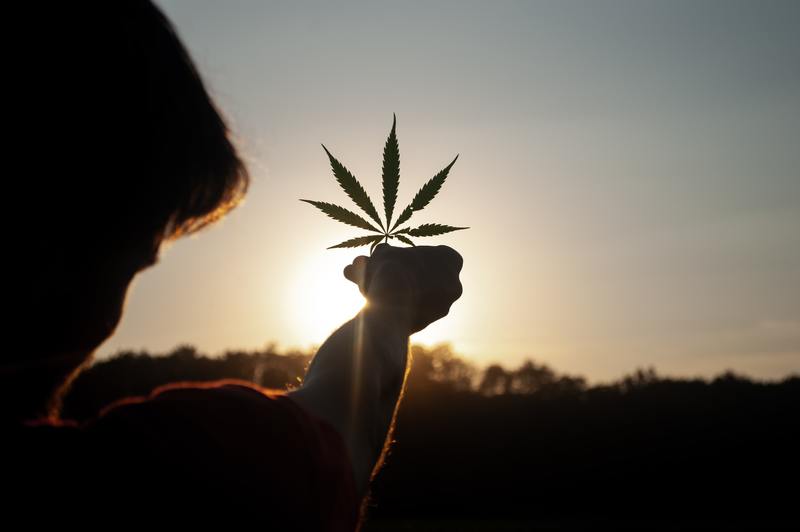The first step on how to get rid of powdery mildew on cannabis plants is to inspect and assess the extent of the contamination. The rest of the steps are written below, so read until the end.

What Is Mildew?
Mildew has two types, which are powdery and downy. Its color ranges from white to light yellow, hence why people misconstrue it as an early sign of mold.
However, mildew is different from mold, the latter having a fuzzy or slimy texture and darker colors. Although, the former does predate the latter, in a way, by preparing the environment and making it more welcoming for the mold.
Another thing that distinguishes mildew from mold is the places they choose to settle on; mildew, it’s specific to organic matter. On the other hand, mold is indiscriminate and can grow in almost any area as long as conditions are met.
Powdery Mildew
Let’s tackle the types of mold, with the first one being powdery mildew. This type of mildew is caused by fungi and usually grows on the top side of the plants’ leaves.
Thus, if you want to inspect your cannabis plants for possible powdery mildew growth, check the top side of the leaves. However, they can also be found on the bottom, however rarely.
True to its name, powdery mildew looks like sprinkled powder on leaves, so they might not alarm you compared to when mold grows on a surface. Despite their non-threatening image, powdery mildew damages your plants.
Apart from the sprinkled powder image of this mildew, you can also identify it through the damage it has caused. For example, curled and discolored leaves tend to point towards the existence of powdery mildew.
Here’s an article on how to identify powdery mildew to ease the mildew removal process.
Downy Mildew
Another type of mildew is downy mildew caused by a water mold species (Plasmopara viticola). In contrast to powdery mildew, this one can be found on the underside of the plants’ leaves, making it harder to detect.
One sign of downy mildew growth is discoloration. Other signs include yellow or brown patches.
The deterioration does not only affect your leaves but the branches as well. This is why experts tend to warn plant owners of the dangers of downy mildew.
What Are The Causes Of Powdery Mildew Growth?
The leading causes of general mildew growth are the conditions it needs to grow, namely, moisture, oxygen, and food sources. There is an additional risk for plants, which is the plant’s spacing.
Moisture issues may be due to overwatering of plants or the lack of airflow between the plants that they do not dry as much as they should. Faulty drainage systems in your cannabis farm may also lead to mildew growth.
Poor air circulation increases mildew growth risk because of the hindered drying time. Apart from that, overcrowded spaces tend to nurture fungi because it gives them an abundant food source.
It also encourages the fungi to spread rapidly, from one plant to another. Before you know it, your entire line of cannabis has discolored leaves and powdery mildew on top of it.
Among the last plant-specific causes of powdery mildew growth is overfertilization. Your plants growing earlier than expected is not always a good sign; if anything, it leaves them vulnerable to powdery mildew.
Steps On Getting Rid Of Powdery Mildew On Cannabis Plants
Step #1. Inspect the damage
Before using commercial or natural remedies, try to see if the damage is manageable. If there are only a few plants and a few leaves damaged, then pluck the leaves.
If a moderate number of infected plants and plucking leaves won’t help, opt for natural remedies. Also, always consider commercial treatments last.
Step #2. Natural remedies
You can use several natural solutions to get rid of the powdery mildew on your cannabis plants. One of them is using baking soda spray.
All you need to do is mix a gallon of water and a teaspoon of baking soda in a spray bottle. Then, spritz the solution on the affected area and leave it there.
Check the area the following day and spray more of the solution if necessary.
Another natural remedy is apple cider vinegar. Per gallon of water, mix two to three teaspoons of vinegar.
Do the same steps as the baking soda solution.
You can also use hydrogen peroxide to kill mildew. Mix a tablespoon of it on a gallon of water and spray on the mildew-contaminated leaves.
Leave it for the day and go back to it the next day. Spray the solution on the area for a second time and wait overnight, then spritz it again on the next day.
Step #3. Commercial products
For commercial products, you can use Banish, a potent mildew killer that will rid you of the powdery mildew in no time.
Conclusion
After the removal process, you have to fix your ways to avoid future growth. Here’s an article that may help you as it talks about how to prevent mildew on outside of house.
Since your cannabis farm is located outside your home, fungi growth from this place can also harm your outdoor spaces. Hence, you need to be informed regarding the preventative measures aside from the removal process.
